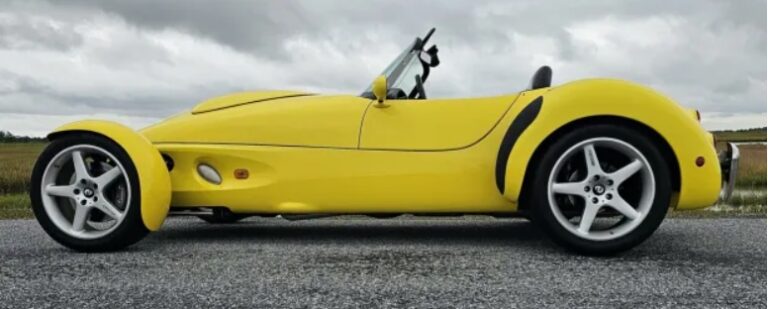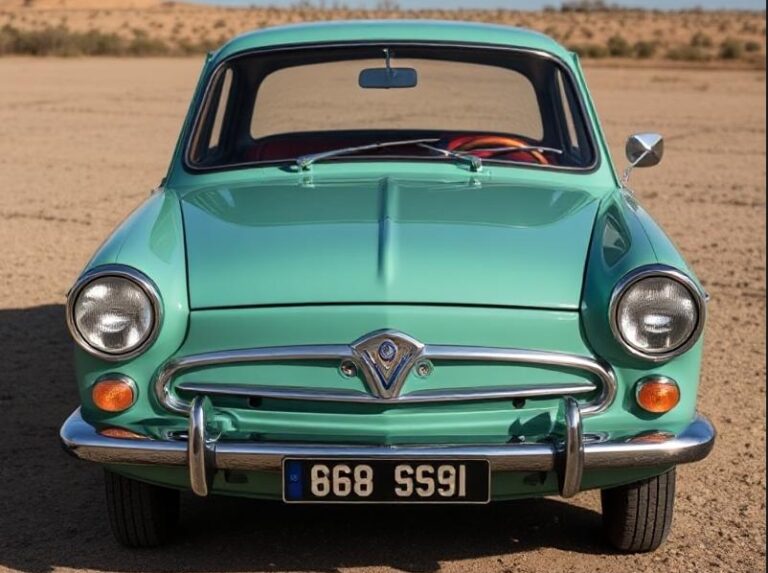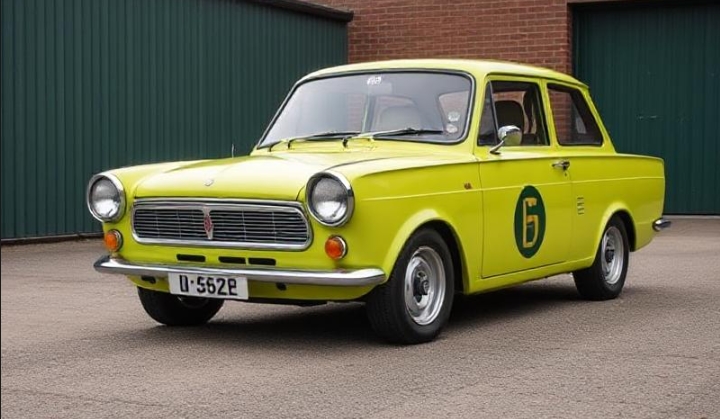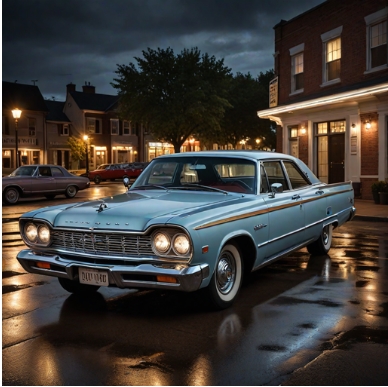The Unlikely Offspring: A Chronicle of the Fiat Dino’s Evolution
In the annals of automotive history, some cars emerge from pragmatic necessity, others from audacious design dreams. Then there are those that arise from a unique confluence of circumstance, a surprising collaboration that births something both unexpected and undeniably desirable. The Fiat Dino is precisely such a creature. Born from a legendary partnership between Fiat and Ferrari, the Dino was not a Maranello supercar in disguise, but rather a sophisticated, more accessible sporting coupe and spider that leveraged the iconic Prancing Horse’s engineering prowess for a wider audience. Its story is one of evolution, refinement, and ultimately, a cherished place in the hearts of enthusiasts.
The genesis of the Fiat Dino can be traced back to the mid-1960s. Ferrari, then deeply involved in Formula 1, faced homologation requirements for their new Dino V6 engine. To meet these regulations, a certain number of road-going cars bearing this engine needed to be produced. However, Ferrari’s own production capacity was stretched thin, and their established models were already positioned at the pinnacle of the luxury sports car market. Enter Fiat, a manufacturing giant with a vast dealer network and a desire to inject some sporting flair into their lineup. The agreement was struck: Fiat would produce the chassis, body, and final assembly, while Ferrari (specifically their sports car division, which was then evolving into a separate entity) would supply the heart of the beast – its glorious V6 engine.
The first Fiat Dino was unveiled at the 1966 Turin Motor Show, arriving as a stylish Spider designed by Pininfarina. This initial model, produced from 1966 to 1969, was powered by a 2.0-liter V6 engine derived directly from Ferrari’s racing Dinos. This engine, a jewel of engineering, produced around 160 horsepower, a significant figure for the era and a testament to its racing pedigree. The Spider was characterized by its sleek, open-top design, its elegant lines exuding a classic Italian sports car aesthetic. Its chassis was a tubular steel frame, proving robust and well-suited to the powerful V6. The interior, while sporty, offered a level of comfort and refinement not typically found in purebred sports cars, making it a viable proposition for touring.
.
THIS is GOOD stuff if your car is in need:

.
Following closely on the heels of the Spider, Fiat also introduced the Coupe version at the 1967 Turin Motor Show. This iteration, designed by Bertone, offered a more practical, fixed-head body style. The Coupe shared the same 2.0-liter V6 engine and chassis as the Spider. Bertone’s design was equally striking, featuring a more angular, contemporary silhouette compared to Pininfarina’s softer curves. The Coupe provided a more secure and weather-friendly option, appealing to those who desired the Dino’s performance and prestige but needed a more versatile vehicle. Both the Spider and Coupe offered a five-speed manual transmission, a key ingredient for engaging driving dynamics.
The early Fiat Dinos, with their 2.0-liter engines, were well-received by the automotive press and a discerning public. They offered a tantalizing taste of Ferrari performance and engineering at a price point considerably lower than a contemporary Ferrari model. However, as the late 1960s transitioned into the 1970s, Fiat aimed to elevate the Dino’s performance and appeal further.
This led to the introduction of the “Dino 2400” in 1969. This significant update saw the venerable 2.0-liter V6 replaced by a larger, more potent 2.4-liter V6 engine. This new engine, still a Ferrari design, boasted an increase in displacement and, crucially, power. It was rated at approximately 180 horsepower, offering a noticeable boost in performance and torque. The 2400 was produced until 1972, and was offered in both Spider and Coupe body styles, continuing the successful design language established by Pininfarina and Bertone.
The 2400 models also saw subtle but important refinements. The chassis received minor tweaks for improved handling and stability. The braking system was upgraded, often featuring disc brakes all around, a welcome improvement given the increased performance. The interior also saw some minor updates, with improved instrumentation and upholstery options, enhancing the overall sense of quality and sportiness. The 2400 represented the zenith of the Fiat Dino’s performance and refinement, a car that truly bridged the gap between a sporty Fiat and a lower-tier Ferrari.
Throughout its production run, the Fiat Dino was a relatively low-volume car. Exact production figures are often debated, but it’s generally accepted that between 7,600 and 7,900 Dinos were produced in total across all variants. This exclusivity, combined with its Ferrari-derived engine and stylish Italian design, has contributed to its enduring appeal among collectors.
While there weren’t distinct “trim levels” in the modern sense, the evolution of the Fiat Dino can be viewed through its model designations and engine sizes:
- Fiat Dino 2000 Spider (1966-1969): The initial open-top offering, featuring the 2.0-liter V6 engine. Designed by Pininfarina.
- Fiat Dino 2000 Coupe (1967-1969): The fixed-head coupe variant, also with the 2.0-liter V6. Designed by Bertone.
- Fiat Dino 2400 Spider (1969-1972): The updated Spider, equipped with the more powerful 2.4-liter V6 engine.
- Fiat Dino 2400 Coupe (1969-1972): The updated Coupe, also benefiting from the 2.4-liter V6 engine.
Beyond these core models, minor variations and optional extras would have been available through Fiat’s dealer network, catering to individual customer preferences. These might have included different wheel options, interior trim choices, and paint colors. However, the fundamental mechanical and design architecture remained consistent within each model designation.
The Fiat Dino was not a car designed to compete directly with the likes of the Alfa Romeo Giulia Sprint GT or Lancia Fulvia Coupe. While those cars were excellent sporting machines in their own right, the Dino occupied a slightly different niche. Its Ferrari V6 engine provided a aural and performance experience that set it apart. The sound of that twin-overhead camshaft V6, with its distinct Ferrari growl, was a significant part of the Dino’s allure.
The collaboration was, by all accounts, a success, albeit a relatively short-lived one. Fiat gained a halo car that injected excitement into their brand, while Ferrari fulfilled its homologation duties and established a stepping stone into a more accessible segment of the sports car market. The “Dino” name itself, initially conceived by Ferrari for a mid-engined sports car project honoring Enzo Ferrari’s son, Alfredo “Dino” Ferrari, adds another layer of historical significance. While the mid-engined Dino 206 GT and later 246 GT were purebred Ferraris, the Fiat Dino shared the engine and a spiritual connection, carrying the Dino legacy in a more practical, everyday format.
The production of the Fiat Dino ceased in 1972. By this time, Fiat’s automotive landscape had shifted, and the Dino’s unique position in the market became less defined. Furthermore, the cost of producing such a specialized vehicle, with its Ferrari-sourced V6, likely became a factor in its discontinuation.
Despite its relatively brief lifespan, the Fiat Dino left an indelible mark. It demonstrated that a partnership between two iconic Italian manufacturers could yield a product that successfully blended performance, style, and a degree of practicality. The Pininfarina-designed Spider remains a timeless classic, its graceful lines evoking the golden age of Italian convertibles. The Bertone-designed Coupe, with its more aggressive stance, offered a compelling alternative.
Today, the Fiat Dino is a highly sought-after classic. Its rarity, combined with the undeniable allure of its Ferrari V6, its beautiful styling, and its unique historical provenance, makes it a desirable acquisition for collectors and enthusiasts alike. Owning a Fiat Dino is not just about possessing a beautiful car; it’s about owning a piece of Italian automotive history, a testament to a remarkable collaboration that resulted in a truly special machine. The evolution of the Fiat Dino, from its initial introduction to the more powerful 2400 models, showcases a journey of refinement and an unwavering commitment to delivering a sporty, engaging, and undeniably Italian driving experience. It remains an unlikely offspring, but one that has undeniably earned its place as a beloved icon.







